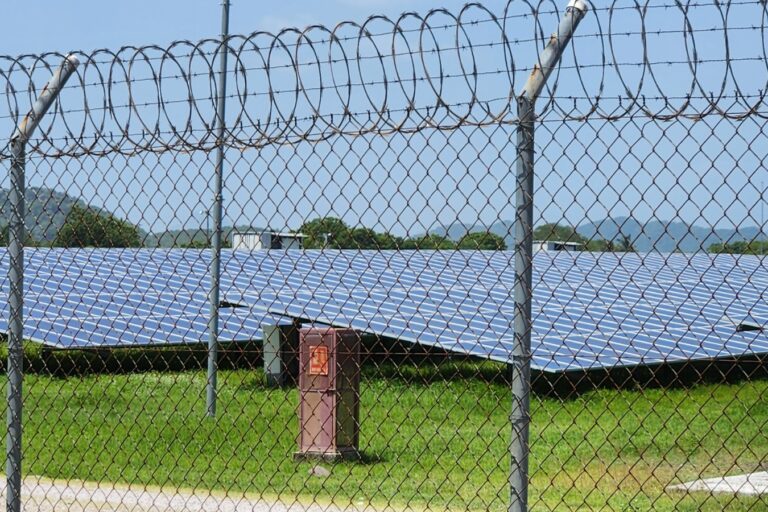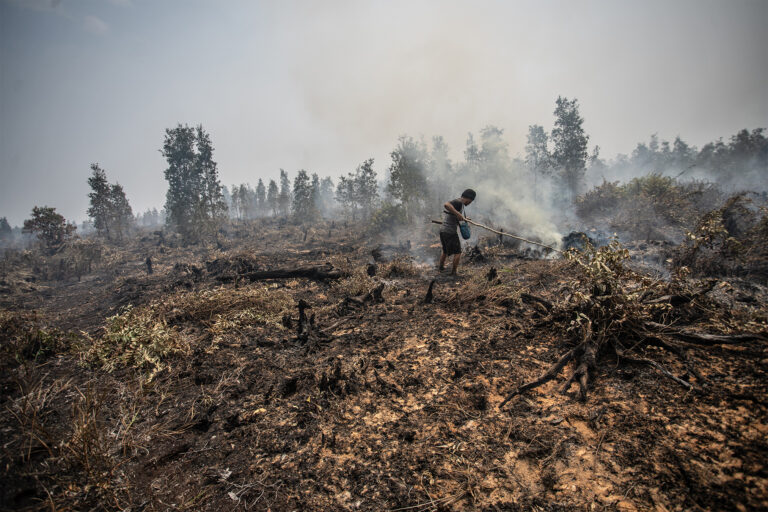- This two-part Mongabay mini-series examines the current status of the climate emergency; how world leaders, scientists and the global community are responding; and what may lie ahead as the world warms beyond the crucial 1.5° Celsius (2.7° Fahrenheit) limit established in the Paris Agreement 10 years ago.
- The unprecedented warming that began in 2023, continued through 2024 and extended into 2025 has caused surprise and alarm. Scientists still don’t fully understand the cause, but some fear it signals the global climate is transitioning into a new state of accelerated warming.
- 2024 was the first full calendar year to exceed 1.5°C above preindustrial levels. A recent projection finds it likely Earth will see a 20-year average warming of 1.5°C by as early as 2029, exceeding a key Paris accord goal and which could trigger self-perpetuating changes pushing Earth’s climate into a less habitable state.
- In January, President Trump withdrew from the Paris Agreement, signaling that the U.S. will not lead on climate action. To date, nearly all the world’s nations have fallen far short of what is needed to stay within 1.5°C. As countries submit new U.N. carbon commitments, some fear the U.S. reversal will ripple around the world.
This story is the first article of a two-part Mongabay mini-series exploring possible climate futures. Read Part Two.
The last two years brought record-shattering temperatures globally and a whirlwind of destructive weather, from catastrophic flooding in Europe and drought in Southern Africa to devastating wildfires in California. 2024 saw more than 600 major extreme weather events planetwide — 152 of which were unprecedented — resulting in the displacement of 824,500 people, according to the World Meteorological Association.
Based on mounting evidence, some scientists now fear we’ve entered a new era of the climate emergency, characterized by accelerated warming and amplified disasters.
Concurrently, recent destabilizing geopolitical events appear to be steering humanity away from decarbonization, delaying progress on urgently needed climate action.
What does this mean for coming decades: Are we on course to avoid the most disastrous futures that climate models have warned of? And if not, how bad could things get? Mongabay asked some of the world’s leading scientists to weigh in.
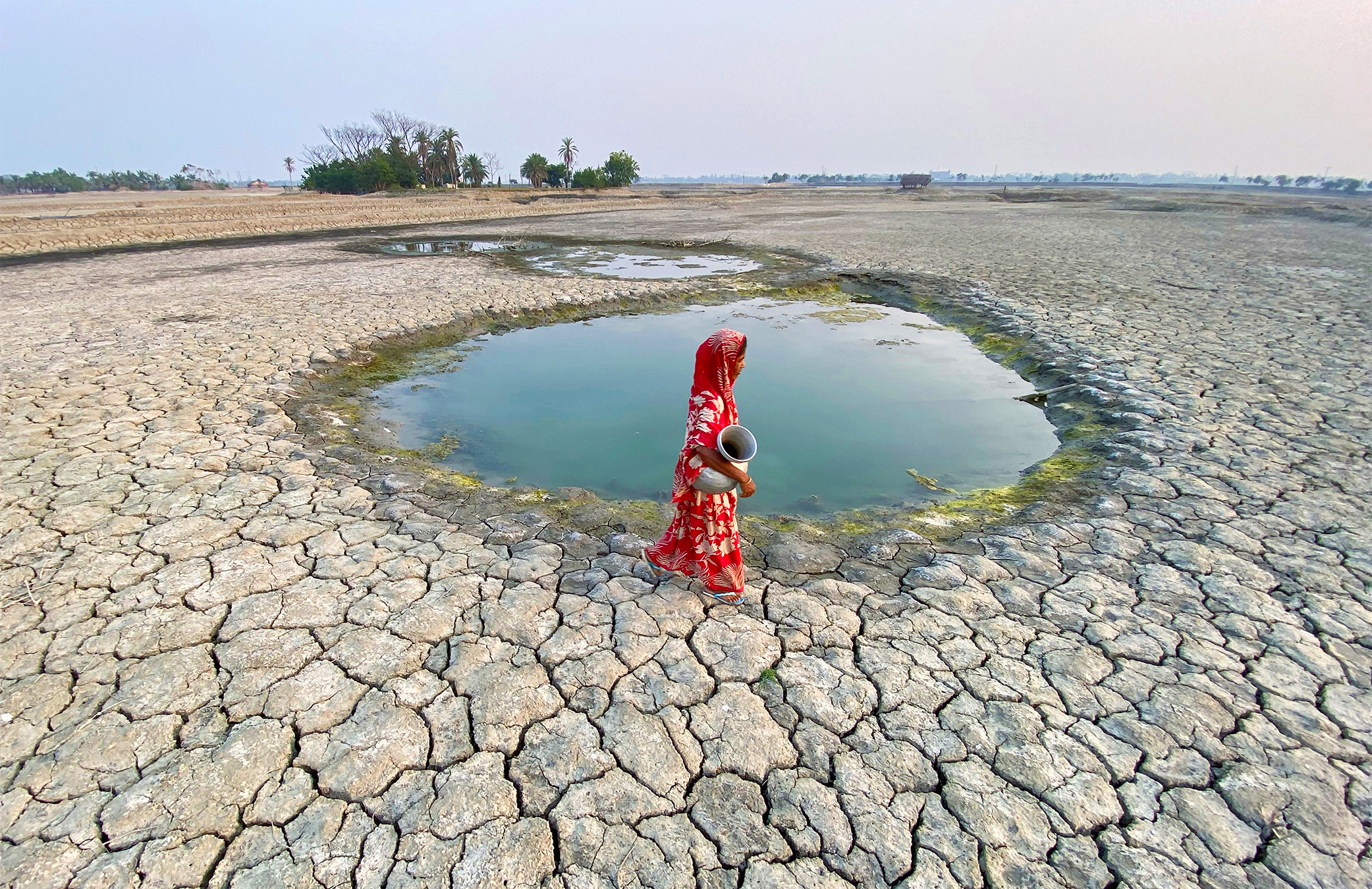
A new phase of climate change?
The unprecedented warming starting in 2023, then intensifying through 2024, surprised and alarmed many climate scientists.
While the underlying warming trend was due to greenhouse gas emissions, several other factors likely contributed to the record temperature surge. This includes a strong El Niño event in 2023-24, an increase in solar radiation as the 11-year solar cycle peaked and a reduction in sulfur dioxide emissions from shipping due to new air pollution regulations, which reduced the reflectivity of clouds over the North Atlantic, allowing more solar energy to reach Earth’s surface.
But even accounting for all these effects, there remains roughly 0.1° Celsius (0.18° Fahrenheit) of unexplained warming. Whether that discrepancy is attributable to normal variability in the climate system or another unknown factor is still being debated.
Scientists expected 2025 would see average global temperatures cool off as we entered a La Niña phase, but this year continued breaking records. January 2025 was the warmest January on record, reaching 1.75°C (3.15°F) above preindustrial levels. Some experts fear this is a signal that the climate is transitioning into a new state of warming.
“We cannot exclude that at least a share of this increased warming rate is related to a planet losing resilience,” says Johan Rockström, director of the Potsdam Institute for Climate Impact Research and a professor of Earth system science at the University of Potsdam.
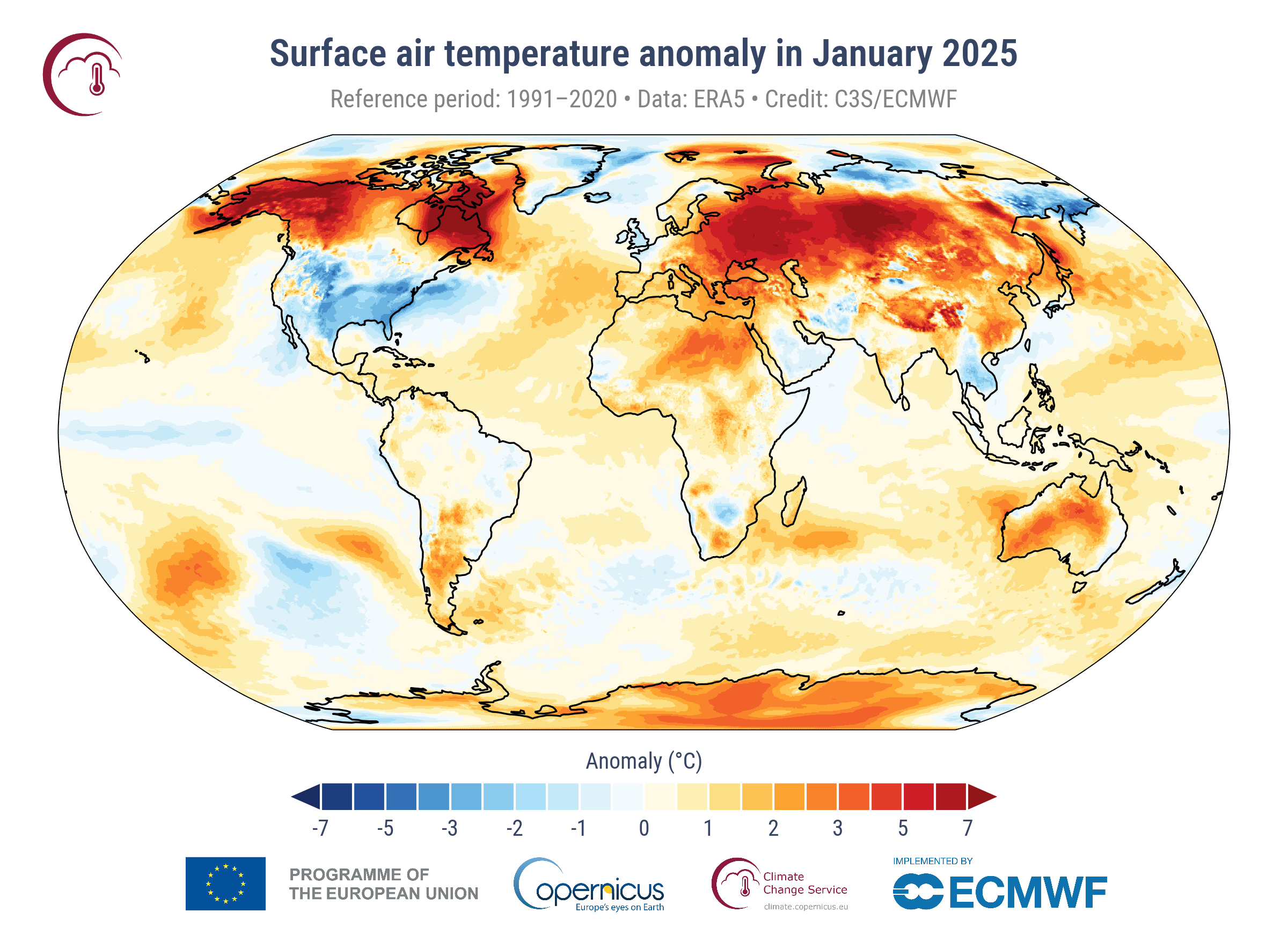
Breaching 1.5°C (2.7°F): Are we there yet?
The 195 parties to the landmark Paris Agreement in 2015 agreed on a core goal: The world needs to keep the global average temperature to no more than 1.5°C above the preindustrial average to avoid climate catastrophe.
But the planet is now teetering on the brink of crossing that threshold. In 2024, the global average temperature was 1.55°C (2.8°F) above preindustrial levels, making it the warmest year on record and the first full calendar year to exceed 1.5°C.
However, this does not mean we have officially breached the Paris Agreement’s temperature goal, defined as the 20-year average global temperature. So, even a full year where temperatures exceed the goal doesn’t qualify as a breach. But this also means that we will only know we’ve crossed the line in hindsight.
Signs point to a quickly warming near future. Two studies published in Nature Climate Change in February concluded that it is extremely likely that humanity has entered the 20-year period in which we will officially breach the 1.5-degree target. A report in May by the World Meteorological Association warns of a 70% chance that the five-year average warming for 2025-29 will be more than 1.5°C above preindustrial levels.
“When we look at the emissions trend and the commitments that have been made to try to adhere to the Paris Agreement, it still looks extremely likely that we will exceed 1.5° within the next decade,” says Samantha Burgess, deputy director of the Copernicus Climate Change Service (C3S), a climate monitoring service managed by the European Commission, which provides open-access climate data, forecasting and tools.
Based on the 30-year warming trend up to April 2025, the C3S global temperature trend monitor estimates Earth will likely see a 20-year average warming of 1.5°C above preindustrial levels by May 2029, exceeding a key Paris Accord goal.
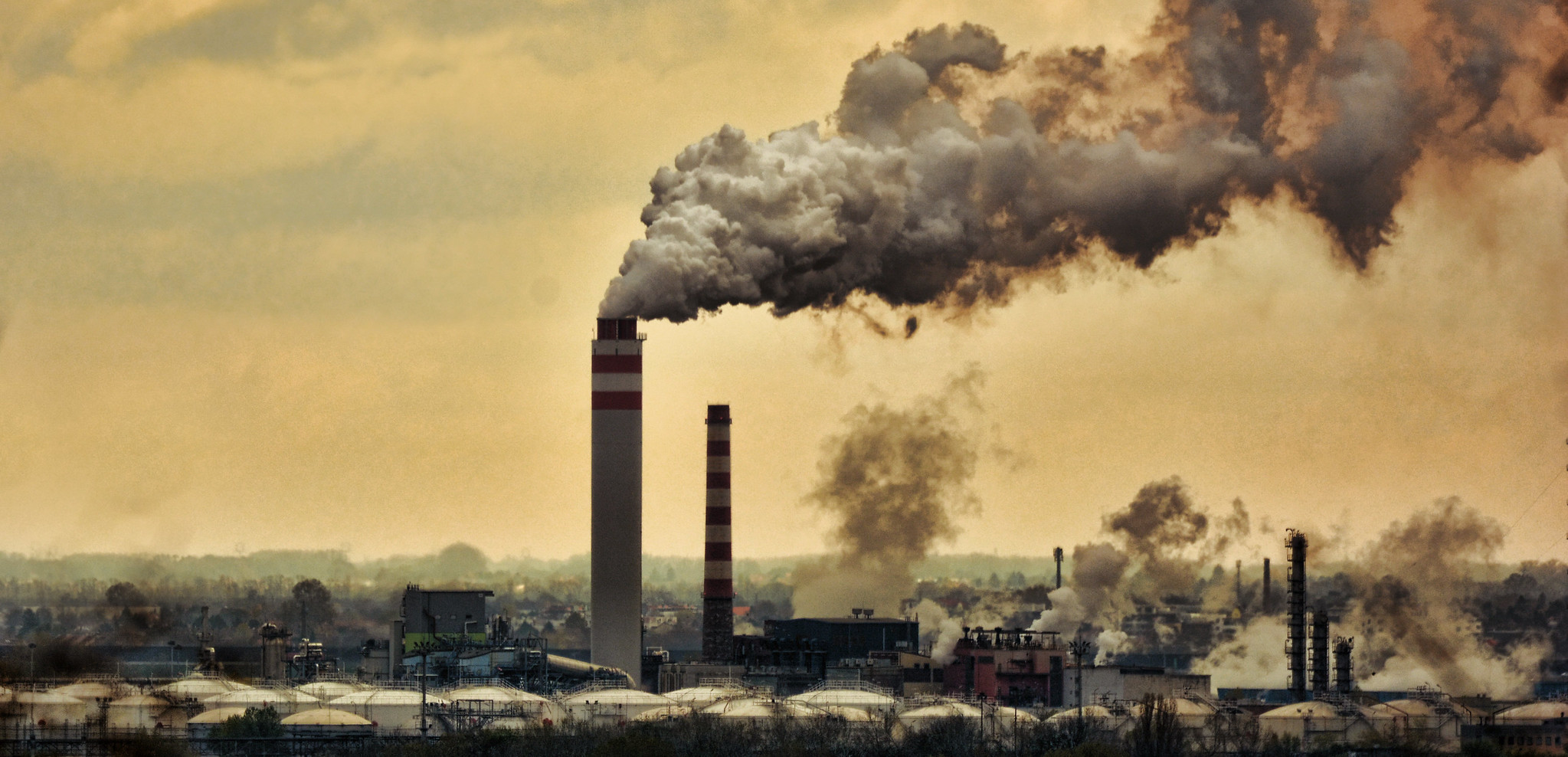
On one level, transgressing the Paris Agreement goal represents a failure by world leaders and carbon polluters to effectively tackle the climate emergency. But it also has important and very real planetary consequences.
Beyond 1.5°C of warming, we face an escalating risk of triggering self-perpetuating changes to vital Earth systems that could push the global climate into a less habitable state.
“Science says it’s not a target; it’s not a goal; it’s a physical limit that you cannot negotiate with,” Rockström warns. If we breach the 1.5°C limit, “we risk causing irreversible changes to the living conditions on planet Earth.”
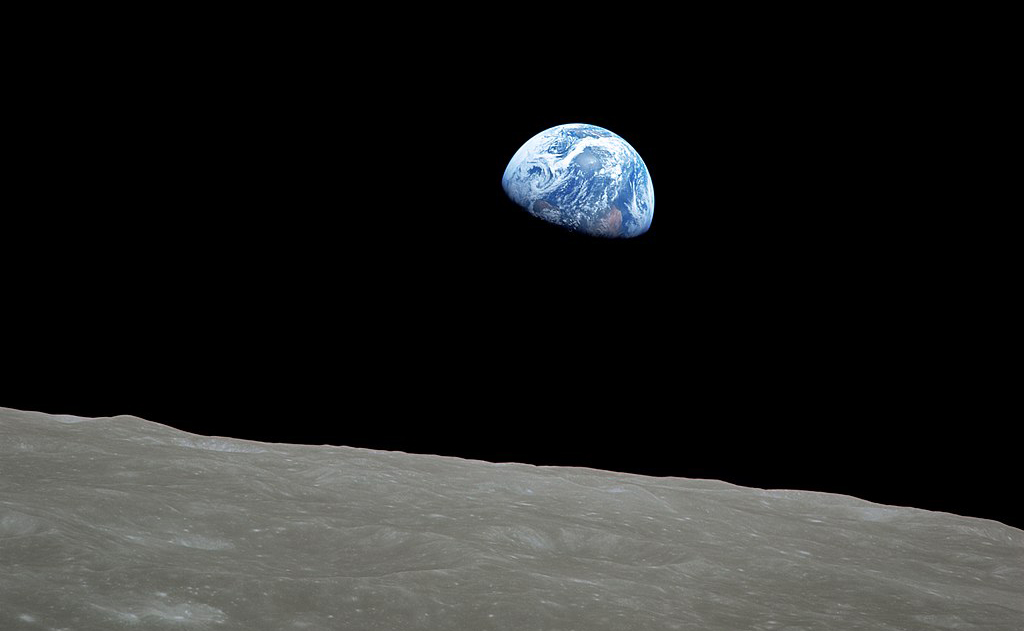
The U.S. changes course
Considering the science, it now becomes more urgent than ever that world leaders up their game to drastically slash carbon emissions and bring the planet back in line with the 1.5°C limit.
But, in one of his first acts as the 47th president of the United States, Donald Trump formally withdrew from the Paris Agreement, signaling at this crucial moment that the world’s largest economy (and the second-largest greenhouse gas emitter after China) will not be leading on climate action. Trump has made clear he intends to undo U.S. progress toward a post-carbon economy, announcing plans to “drill, baby, drill,” a policy that could help keep the world hooked on fossil fuels.
“I think the U.S. are just consigning themselves to the dustbin of future history,” says Tim Lenton, professor of climate change in the Global Systems Institute at the University of Exeter who has done extensive work on Earth system tipping points.
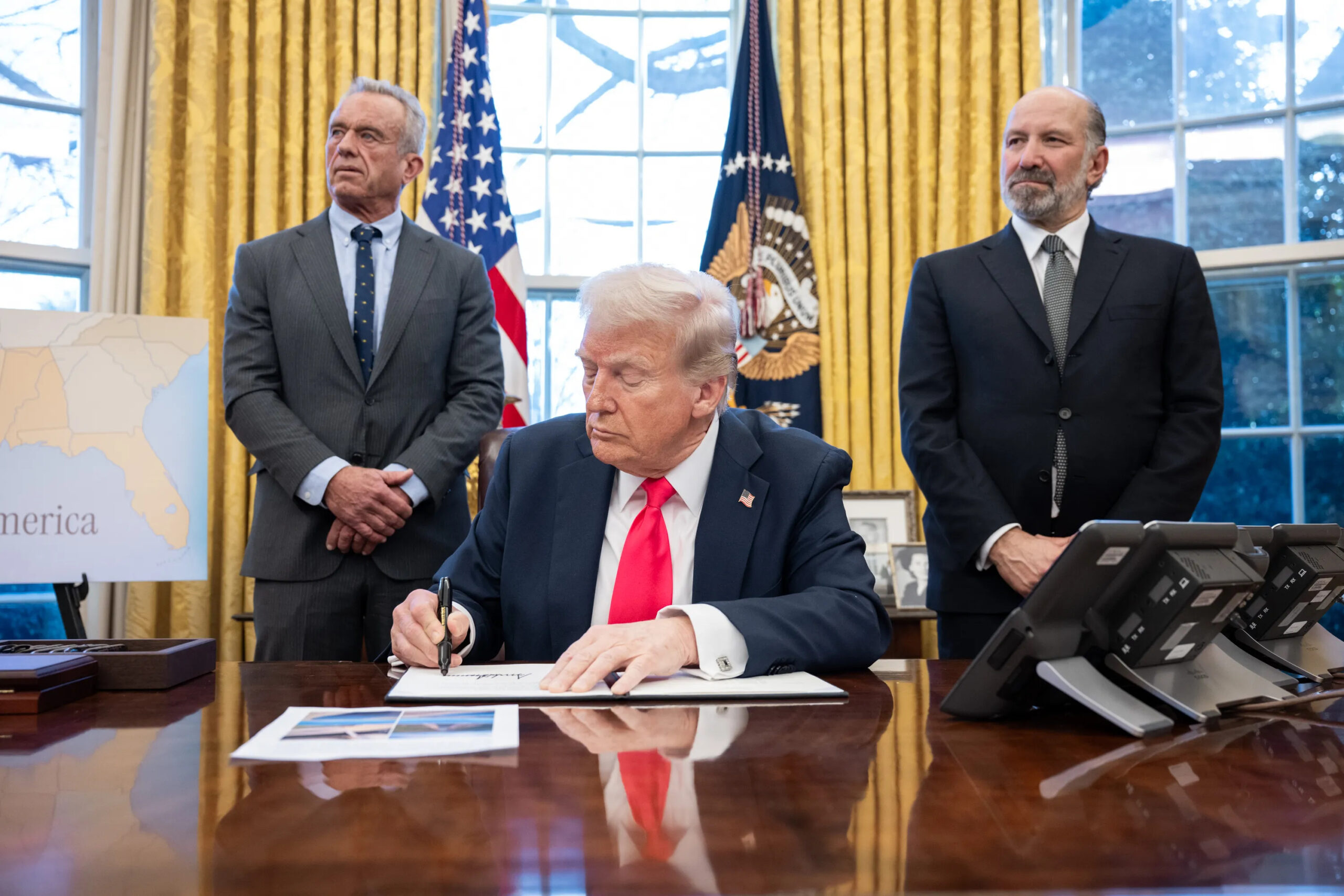
Despite Trump’s radical policies, experts who spoke to Mongabay remain optimistic, citing the relatively small impact of the federal government on the decarbonizing trajectory of the United States. “The decreases in emissions in the U.S. since about 2005 have not actually been driven by federal policy,” notes Gavin Schmidt, director of the NASA Goddard Institute for Space Studies (GISS) at Columbia University. “They’ve been [driven] by market forces and regional policies, which have not changed.”
“I don’t think it’s reason to throw in the towel,” Lenton agrees. “Rather, it’s an invitation for other [nations] to step up and get the reputational dividend that’s going to come if we do manage to avoid catastrophe. It’ll be clear to those looking back from the future who stood in the way.”
However, the Trump administration’s approach on climate could have ripple effects around the globe, as it pushes for more drilling, supports U.S. exports of liquified natural gas and promotes “export opportunities for coal and coal technologies.”
“It’s very unlikely that [other countries] will raise their ambition levels in line with what science tells us is necessary,” Rockström says. But the U.S. withdrawal from the Paris accord couldn’t have come at a worse time, as countries worldwide prepare to commit to their climate targets for the next decade.
A time for ambitious climate commitments
As of February 2025, parties to the Paris Agreement were due to submit new, more rigorous nationally determined contributions (NDCs), outlining their carbon reduction commitments over the next 10 years. NDCs form the basis for the Paris Agreement, with each nation setting a voluntary emission reduction target and offering detailed plans for achieving it.
Nearly 95% of countries missed the February deadline, though 22 out of 195 had submitted updated NDCs by May, including Canada and Japan.
Ironically, one of the few countries that did submit a new NDC on time was the United States. In December 2024, the outgoing Biden administration submitted the U.S. 2035 NDC to the United Nations Framework Convention on Climate Change (UNFCCC). By leaving the Paris Agreement, the Trump administration revoked this commitment, but the document can still serve as a benchmark for U.S. states that support climate action.
To avoid dangerous overshoot of the critically important 1.5°C global target, human-caused greenhouse gas emissions must be almost halved by 2030, according to the Sixth Assessment by the U.N. Intergovernmental Panel on Climate Change (IPCC). While this goal may be technically achievable, it is daunting due to the lack of will as demonstrated by world leaders, along with the re-entrenchment by fossil fuel companies and other top carbon polluters.
Climate actions over the next decade will be crucial, with ambitious new NDC commitments serving as a strong indication of whether humanity can avoid climate catastrophe. And those commitments ideally need to come before the COP30 summit in Brazil this November.
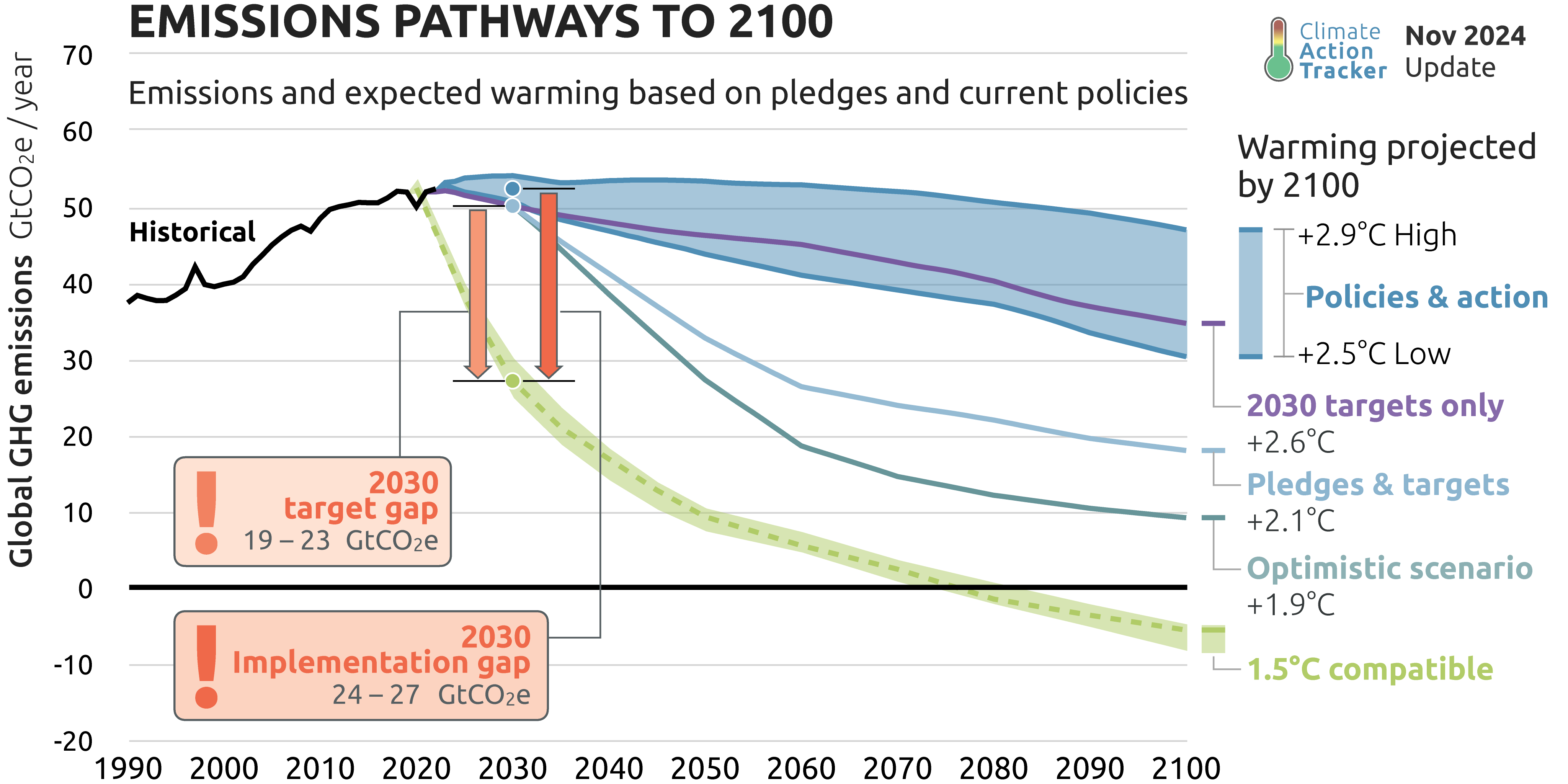
With the U.S. out of the Paris Agreement, the NDCs of China, India and the EU will set the stage for global climate action over the coming decade. China is responsible for almost a third of global carbon output, but in recent years it has also led the way on renewable energy. India, the third-largest emitter, has also made major strides in solar and wind power and is now the world’s third-biggest producer of renewables. The EU has so far been a world leader in terms of climate ambition, but with several countries moving toward right-wing populist rule that embraces anti-science rhetoric, the path forward for the bloc is uncertain.
While the U.K. boasted the closing of its last coal power plant in 2024, analysts say the nation’s claim of being on target for net zero emissions by 2050 is made possible by a flawed carbon accounting scheme that fails to tally major CO2 releases from burning forest biomass to replace coal — a faulty climate solution the EU, Japan and other nations are also buying into. This strategy could push emissions significantly higher than estimated.
Critics note that the previous round of NDCs, submitted in 2021, fell far short of what is needed. Those commitments put the Earth on course to warm by between 2.6°C (4.7°F) and 2.8°C (5°F) by the end of the century. To date, no large industrialized nation is on track to be “1.5°C compatible” by 2030.
The most recent 2024 U.N. Emissions Gap Report — provocatively titled “No more hot air … please!” — anticipates that a failure to significantly raise NDC ambition “and start delivering [results] immediately would put the world on course for a temperature increase of 2.6-3.1°C [5.6°F] … [and] bring debilitating impacts to people, planet and economies.”
To limit warming to less than 2°C, global GHG emissions need to decrease by around 28% by 2030, whereas fully implementing the most recent round of NDCs would only reduce emissions by 4%. Yet, G20 countries are expected to miss even these modest targets.
“What you should always be looking for is not what people say they want to do, but what they’re actually doing,” Schmidt says. Emissions have peaked in approximately half of G20 countries, but those countries still need to accelerate decarbonization to reach their net-zero goals.
Rockström nevertheless remains confident the world is on the right path, even if change is excruciatingly slow. “The climate and sustainability agenda is so mature and so robust and so ingrained in the core fabric of the world economy, that there’s no turning back,” he says. “We are moving away from climate damaging societies; the problem is that it’s almost inevitable that we will be slowing down the pace, at least in the short run.” Unfortunately for us, nature is not sympathetic to such delays.
Banner image: Students in Afghanistan walk to school in a sand storm during a drought in 2019. Image by Solmaz Daryani via Climate Visuals (CC BY-NC-ND 4.0).
Part two of this story looks at the projected state of the world beyond 1.5°C of warming and what the consequences could be for humanity.
https://news.mongabay.com/2025/06/climate-futures-whats-ahead-for-our-world-beyond-1-5c-of-warming
Citations:
Cannon, A. J. (2025). Twelve months at 1.5 °C signals earlier than expected breach of Paris Agreement threshold. Nature Climate Change. doi: 10.1038/s41558-025-02247-8
Bevacqua, E., Schleussner, C., & Zscheischler, J. (2025). A year above 1.5 °C signals that earth is most probably within the 20-year period that will reach the Paris Agreement limit. Nature Climate Change. doi:10.1038/s41558-025-02246-9
Ripple, W. J., Wolf, C., Gregg, J. W., Rockström, J., Mann, M. E., Oreskes, N., … Crowther, T. W. (2024). The 2024 state of the climate report: Perilous times on Planet Earth. BioScience, 74(12), 812-824. doi:10.1093/biosci/biae087










